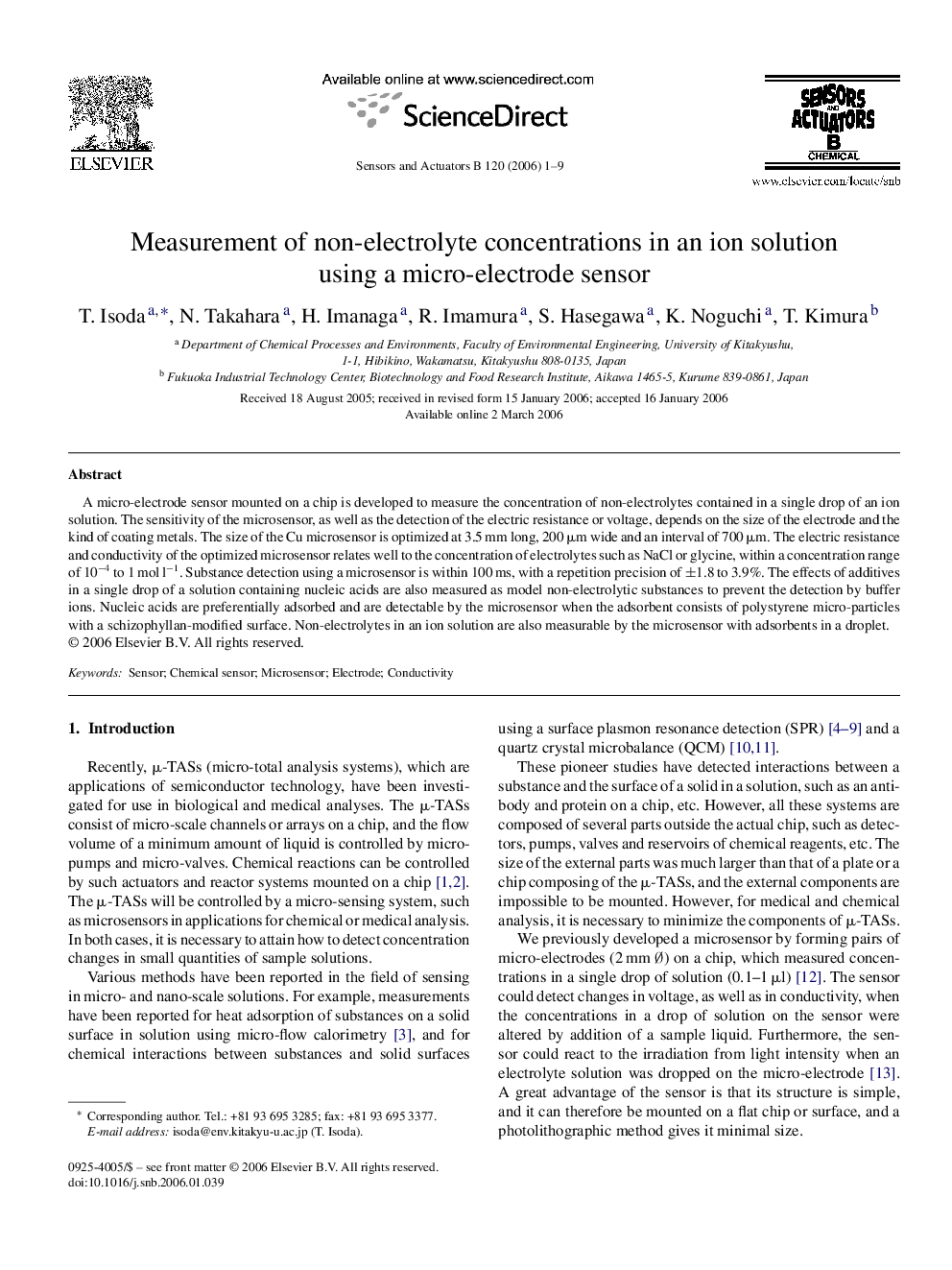| Article ID | Journal | Published Year | Pages | File Type |
|---|---|---|---|---|
| 744939 | Sensors and Actuators B: Chemical | 2006 | 9 Pages |
A micro-electrode sensor mounted on a chip is developed to measure the concentration of non-electrolytes contained in a single drop of an ion solution. The sensitivity of the microsensor, as well as the detection of the electric resistance or voltage, depends on the size of the electrode and the kind of coating metals. The size of the Cu microsensor is optimized at 3.5 mm long, 200 μm wide and an interval of 700 μm. The electric resistance and conductivity of the optimized microsensor relates well to the concentration of electrolytes such as NaCl or glycine, within a concentration range of 10−4 to 1 mol l−1. Substance detection using a microsensor is within 100 ms, with a repetition precision of ±1.8 to 3.9%. The effects of additives in a single drop of a solution containing nucleic acids are also measured as model non-electrolytic substances to prevent the detection by buffer ions. Nucleic acids are preferentially adsorbed and are detectable by the microsensor when the adsorbent consists of polystyrene micro-particles with a schizophyllan-modified surface. Non-electrolytes in an ion solution are also measurable by the microsensor with adsorbents in a droplet.
